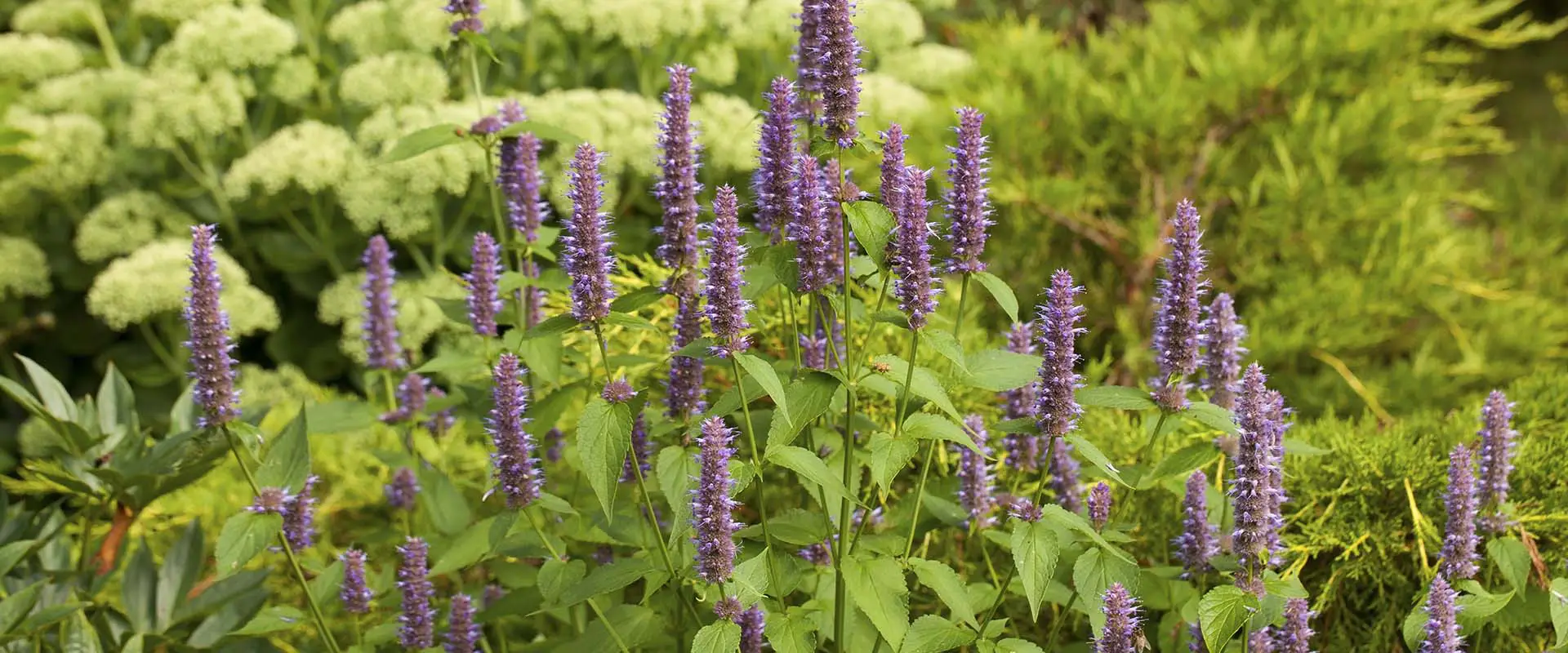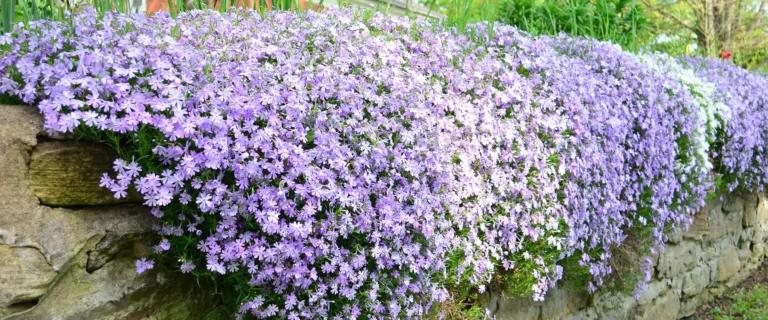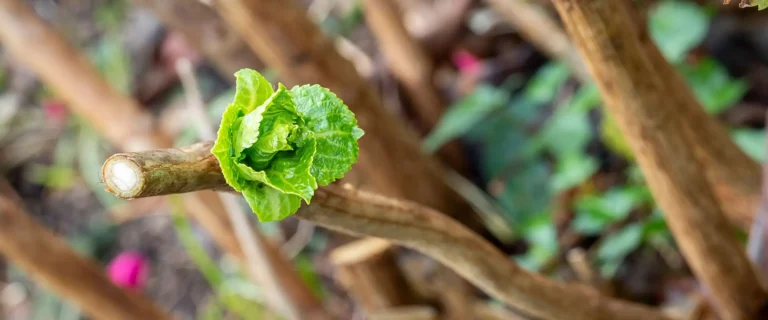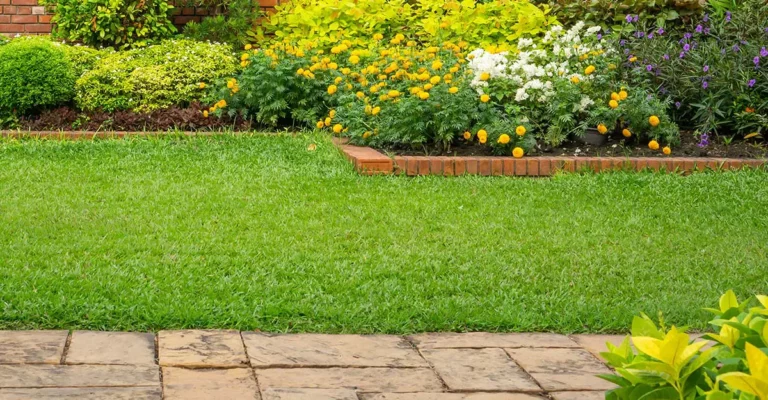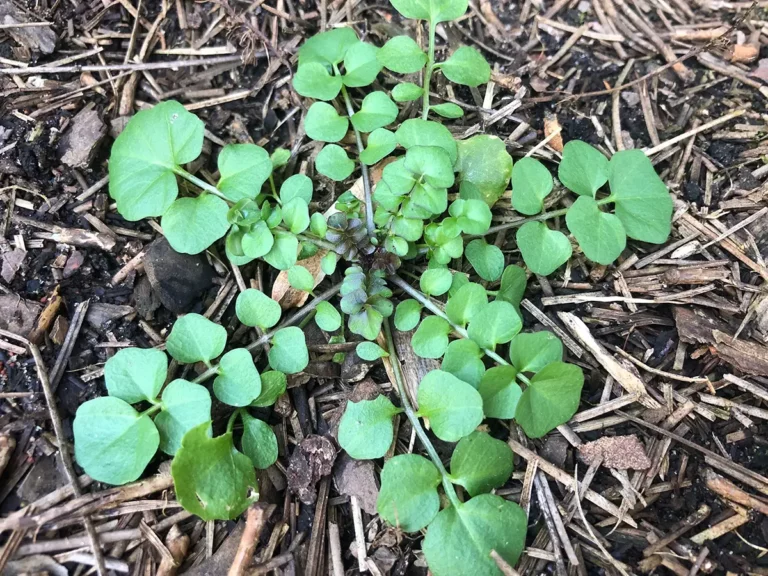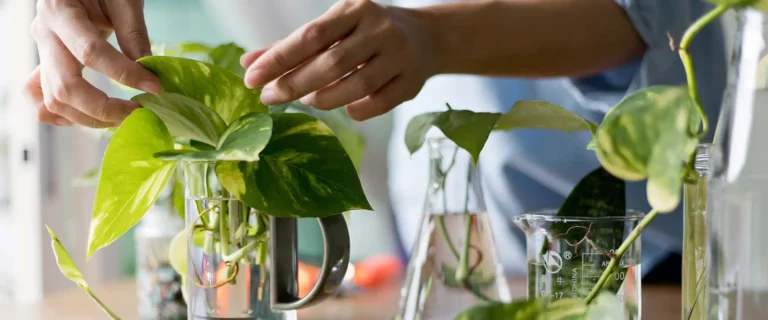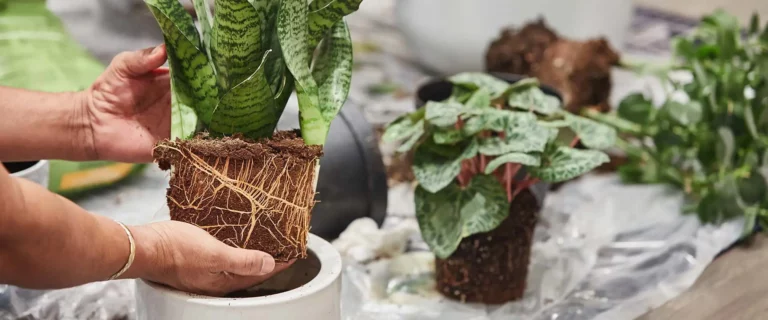Agastache, also known as Hummingbird Mint and Giant Hyssop, is Sean’s most favorite perennial, and considering how many perennials there are out there, that’s “high kudos,” according to him, our horticulture guru here at The Gardener’s Center. So here’s the big question…
Why is agastache Sean’s favorite perennial? Soooo many reasons…
This perennial stands tall without extra support.
Agastache don’t need stakes or cages, and while they get big and tall, they stand up very nicely all on their own.
And while most perennials are not long-bloomers, that’s not true of the agastache…
Agastache are probably the longest blooming perennial you can have in a temperate-climate perennial garden.
Here in coastal Connecticut, they start to color up about late June or early July, and bloom their beautiful hearts out until we get a freeze in October. There really aren’t any other perennials that behave like that.
They also don’t require deadheading to keep blooming. They keep going and going and going…
There isn’t a better pollinator plant to have in your pollinator garden if you’re interested in attracting bees, butterflies and hummingbirds.
(It’s not known as Hummingbird Mint for nothing!) But the bees… The bees absolutely adore agastache!
Sean often recommends this plant to people who are having trouble getting pollinators to their vegetable gardens. And you don’t have to plant the agastache in the garden itself; you can put it in a pot to draw the bees in where they can then find the more inconspicuous squash and tomato flowers.
Animals such as rabbits, deer and woodchucks are not interested in agastache.
These plants are in the mint family and their leaves have a very strong licorice or anise scent, something animals just don’t like. Sean also can’t think of any insects that are fans of agastache either.
Is agastache a native plant?
Well, it’s complicated and depends on how you’re gardening with natives. There are North American natives. There are native cultivars or “nativars.” And there are also genetic eco-types that may be specific to your county or town. So, depending on how you’re using native plants and the parameters you’ve set, the agastache may or may not work as a native for you.
The North American native is the Agastache foeniculum or Giant Hyssop, native to the Great Plains, which includes the upper midwest and southern Canada. This is the “pure” native agastache, according to Sean. They look great in the spring, but get a little “rangey” in the summer.
Some common and popular cultivars you’ll most likely see in the nursery are Purple Haze, Blue Fortune, Little Adder and Blue Boa.
The cultivars are hybrids; one parent is the Agastache foeniculum and the other is the Agastache rugosa, also known as Korean Mint or Chinese Patchouli, an Asian species.
The reason these cultivars have the Korean Mint in their parentage is because it allows these plants to be a bit smaller and to tolerate wetness, things that make them more adaptable to our gardens.
How long do agastache live?
Agastache are perfectly hardy plants, most to Zone 5 or 6, but they don’t love to be wet in the wintertime. If you’re having difficulty with your agastache in their second or third winter, it’s probably not due to the cold temperature, but to the wetness. Like lavender, these plants like water, but they don’t like to be wet. In other words, they appreciate being able to dry out; they do not like sitting in water or wet soil.
Pro tip: Don’t plant them with other perennials that get thirsty and then get watered a lot.
You want to water your agastache deeply and infrequently for best results. Otherwise they can develop crown rot pretty quickly.
Wintertime wetness can be issue number one for agastache. Snow isn’t really a problem unless you’re in a wonky-winter area of Connecticut like us where it can be 20 degrees with snow on the ground one day and then 50 degrees and raining the next. It’s the freeze/thaw cycle that’s the problem. What can you do? Put a mulch of gravel or crushed stone around the base of these plants in the fall or early winter to prevent wet soil from being right up against their stems.
The second issue is that they’re really not forever plants. Some perennials can live for a very long time… Peonies, hosta, daylilies, for example, can live for decades. Agastache, on the other hand, typically live for three to five years. If yours are only lasting one year, watch for too much water, whether it’s winter wetness, soil that’s too “heavy,” or too much watering during the growing season.
Other plants with a lifespan of three to five years? Coreopsis and coneflowers are two that come to mind. For some perennials, this is perfectly normal. Sean’s opinion? Replacing agastache every three to five years, with their long blooms and attraction to pollinators, is well worth it.

